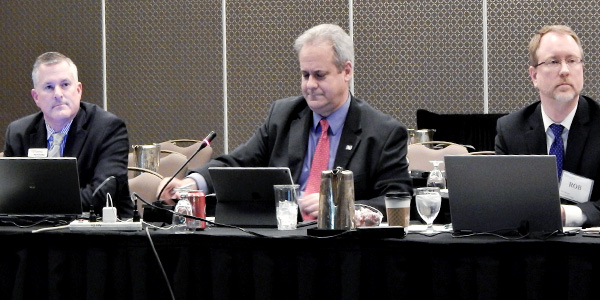By Tom Kleckner
SPP will partially sate its hunger for expansion this year when it begins providing reliability coordinator (RC) services to more than a dozen entities in the Western Interconnection.
At the same time, the RTO continues to reinvent itself with a pair of stakeholder-led initiatives that may change the way it allocates transmission costs and recovers its administrative fee.
A year ago, SPP was well on its way to adding Mountain West Transmission Group participants as members, following much the same process as it did in adding Nebraska’s public utilities in 2009 and the Integrated System in 2015. However, those plans were blown up in April by Xcel Energy’s surprise decision to leave Mountain West, taking almost half the group’s load with it. (See Xcel Leaving Mountain West; SPP Integration at Risk.)
Opportunity soon presented itself again several months later, when Peak Reliability, the RC provider for much of the Western Interconnection since 2011, announced it would cease operations by the end of 2019. (See Peak Reliability to Wind Down Operations.)
While CAISO signed RC contracts with the bulk of Western load, SPP picked up about 12%, including most of the original Mountain West members. Among the entities: Xcel’s Public Service Company of Colorado subsidiary. (See CAISO RC Wins Most of the West.)
“We’ve worked hard over the last several months to demonstrate the quality and breadth of our service in terms of technical expertise, a customer-centric approach to doing business and the integrity of our people and processes,” SPP COO Carl Monroe said at the time.
The contracts will add two more states — Arizona and Utah — to SPP’s now 16-state footprint. The current timetable has SPP assuming Peak’s RC services on Dec. 3, though the Western Electricity Coordinating Council would like to see that pushed up to Nov. 1 to coincide with CAISO’s transition date. SPP stakeholders are resisting the move.
HITT Squad
The events out West are just some of the dramatic changes that have taken place within the industry and the markets over the last decade. To accommodate those changes and plan for a changing future, SPP last year created the Holistic Integrated Tariff Team (HITT), comprising RTO directors, state regulators and members, to determine the best way to align its planning processes, cost-allocation methodologies, and market products and services.
The HITT spent much of 2018 listening to presentations from staff, market participants, consultants and stakeholders, hashing over ideas that have been discussed in other working groups or brought up by stakeholders time and again.
“There’s certainly a lot of work that’s been going on through the different groups in SPP … we don’t want to overlap that or re-digest those things,” said Nebraska Public Power District’s Tom Kent, HITT chair. “We want to build off the work that’s already being done and make sure we can account for the work that’s being done in those other groups and support them. We don’t want to retrace ground other groups are working on.”
The team is only now discussing how to organize a report with its final recommendations. The report is due to the Board of Directors and Members Committee in April, but the HITT has also scheduled an educational session before the Markets and Operations Policy Committee’s January meeting in New Orleans.
The HITT was modeled after the 2008/09 Synergistic Planning Project Team, which resulted in SPP’s Integrated Transmission Planning process and the highway/byway cost allocation methodology. Under the methodology, “highway” projects rated at more than 300 kV are allocated 100% systemwide on a load-ratio-share basis. “Byway” projects (100 to 300 kV) are funded two-thirds within the transmission zone and one-third systemwide.
The RTO has approved or built $6.3 billion in transmission infrastructure since 2010, with another $2.9 billion to be completed by 2022.
Spreading the Fee
The Schedule 1A Task Force’s objective is slightly less daunting: determine whether there is a better way to recover SPP’s administrative fee.
The fee, which is being reduced this year to 39.4 cents/MWh from 42.9 cents/MWh, is collected under Schedule 1A of SPP’s Tariff on transmission contracts between transmission providers and customers. Point-to-point contracts are billed against reserved transmission capacity, and network service is billed against the prior year’s average monthly zonal peak.
The problem is, different state regulators use different calculations and rely on historical data for current-year costs. The Integrated Marketplace has also required additional staff and IT costs, which has increased the amount to be collected.
SPP CFO Tom Dunn has proposed using energy metrics to reduce the fee, as financial-only players not currently paying Schedule 1A fees would also be contributing.
The task force is currently evaluating how best to recover costs in SPP’s transmission congestion rights market. The group was to present its recommendations during the January governance meetings, but it has a meeting scheduled for Feb. 5.






